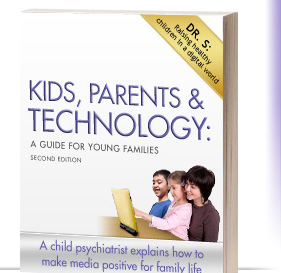INTRODUCTION: Only You Can Give Your Kids This Great Gift
And this is only the beginning (http://bits.blogs.nytimes.com/2009/09/17/the-smartest-us-city-is-dubuque).
FRONTLINE: digital nation – life on the virtual frontier | PBS — A TV/Web report on the digital revolution and how it’s changing our lives, with video stories, interviews, and user-generated video on relationships, …www.pbs.org/wgbh/pages/frontline/digitalnation.
Our daily lives as grownups have changed in so many obvious and subtle ways by technology (http://www.nytimes.com/2009/09/20/magazine/20FOB-onlanguage-t.html?emc=tnt&tntemail1=y).
While “geeks” and “nerds” had been early adopters of new technologies in the past, a recent study has shown that ordinary families are now the main early adopters, despite the recession (http://www.nytimes.com/2009/09/02/technology/02survey.html?_r=1&emc=tnt&tntemail1=y).
Innovation in access, size, portability, and human-machine interfaces are evolving with such rapidity that we can hardly imagine the interactive landscape we will experience ten years from now (http://www.nytimes.com/2008/07/10/technology/personaltech/10apps.html?_r=1&ref=technology).
Currently, these include the Internet, video games, DVDs and videos, interactive Blu-Ray DVDs, interactive television, hybrid Internet television, baby videos, intelligent toys, mobile and smart phones, movies, flash drives, radio, hybrid books and MP3 players (http://www.nytimes.com/2009/10/01/books/01book.html?_r=1&emc=tnt&tntemail1=y.) reading devices, eBooks,
(http://www.nytimes.com/2009/09/24/technology/personaltech/24basics.html?emc=tnt&tntemail1=y,
http://www.nytimes.com/2009/10/04/business/04digi.html?emc=tnt&tntemail1=y,
http://www.nytimes.com/2009/10/04/books/review/Hyde-t.html?emc=tnt&tntemail1=y).
Moreover, all of these interactive opportunities are being ingeniously blended and combined in cheaper, more portable, and smaller packages, and new innovative applications appear daily.
(http://www.nytimes.com/2008/07/14/business/media/14bluray.html?_r=1&ref=technology,
http://bits.blogs.nytimes.com/2008/06/27/google-plays-with-your-living-room-tv/?ref=technologyFirefoxHTML\Shell\Open\Command,
http://www.nytimes.com/2008/07/14/business/media/14mtv.html?_r=1&ref=technology), interactive television
(http://www.techcrunch.com/2008/06/18/microsoft-gets-into-interactive-tv-ads-buys-navic-networks-for-an-estimated-200-to-300-million).
Interactive digital media are also flooding children’s lives: DVDs and videos, interactive Blu-Ray DVDs
(http://www.nytimes.com/2008/07/14/business/media/14bluray.html?_r=1&ref=technology), interactive television
(http://www.techcrunch.com/2008/06/18/microsoft-gets-into-interactive-tv-ads-buys-navic-networks-for-an-estimated-200-to-300-million).
Today, the hybrid Internet-TV marries the two powerful technologies (http://www.nytimes.com/2009/09/21/technology/21canvas.html?emc=tnt&tntemail1=y).
The Wired Homestead (M.I.T. Press, 2003 , ISBN -10: 0262700948), edited by Joseph Turow and Andrea L. Kavanaugh, is an outstanding, must-read scholarly sourcebook that offers up-to-date essays, review articles, and original research by superb leading thinkers. The breadth and depth of current thinking and the scholarly work of most of the first-rate pioneers in this area promise a prolific future of vital research that deserves public support.
Such applications are working downwards into the lives of younger and younger children
(http://www.nytimes.com/2008/05/08/technology/personaltech/08basics.html?_r=1&scp=115&sq=children%20technology&st=cse).
But where is all this going? Research and hard facts are hard to come by and in their infancy, but there is plenty of heated debate because there is so much money involved. See these relevant writings:
- Boston researchers Lawrence Kutner and Cheryl Olson’s very readable Grand Theft Childhood (Simon & Schuster, 2008, ISBN 10 0-7432-9951-5) is a fascinating, balanced current study of video games and includes practical advice for parents in the last chapters.
- Born Digital (Basic Books, 2008, ISBN 978-0-465-00515-4) by attorneys John Palfrey and Urs Gasser is a superb and readable description of the challenges and rewards facing our current generation of children.
- Dade Hayes, a father and superb journalist, details his own study of how children’s media has evolved into the enormously profitable industry and how “money rules” the merchandising spin-offs aimed at preschoolers, now so much part of our culture in Anytime Playdate (Free Press, 2008, ISBN 10: 1- 4165 4683-9).
- Children, Adolescents, and Media Violence (Steven, J. Kirsh, Sage Publications, 2006, ISBN: 0-7619-2876-2) is a readable, balanced, and well thought out, and well-organized guided tour of the actual empirical research on the passionate decades-long debate.
- Handbook of Children and the Media edited by pioneers and scholars Dorothy G. Singer and Jerome L. Singer (Sage Publications, 2001, 0-7619-1955-4) is the authoritative and comprehensive compendium of research, scholarly works, and sourcebook current as of the publication date.
- Editors Miriam J. Metzger and Andrew J. Flanigan assembled scholarly writings on positive and negative aspects of Digital Media, Youth, and Credibility (The MIT Press, 2008, ISBN: 978-0-262-56232-4)
- Editor Tara McPherson gathers fascinating writings about Digital Youth, Innovation, and the Unexpected (The MIT Press, 2008, ISBN: 978-0-26263359-8)
- James P. Steyer, a well-connected parent and advocate writes a scathing critique of the children’s media industry and provides suggestions to parents (The Other Parent, Atria Books, 2002, ISBN: 0-7434-0583-8)
- The Wired Homestead (M.I.T. Press, 2003, ISBN -10: 0262700948), edited by Joseph Turow and Andrea L. Kavanaugh, is an outstanding, must-read scholarly sourcebook that offers up-to-date essays, review articles, and original research by superb leading thinkers. The breadth and depth of current thinking and the scholarly work of most of the first-rate pioneers in this area promise a prolific future of vital research that deserves public support.
- Children in the Digital Age (Praeger, 2002, ISBN 1- 0275976521), edited by Sandra L. Calvert, Amy B. Jordan, and Rodney R. Cocking, has earlier but worthwhile scholarly essays, review articles, and several actual original studies by leading scholars on TV and the Internet, and is a must read for those serious about this subject.
- In Generation Digital (M.I.T. Press, 2007, ISBN 10: 0262134780), scholar and self-admitted activist Katherine C. Montgomery summarizes the historical struggle for control of children’s minds between family and child development advocates and diverse merchandising, e-commerce, entertainment, and civil liberty forces. The author describes how, having succeeded for decades with sophisticated marketing techniques in TV, commercial interests are now revving up powerful interactive media techniques to bypass parents and reach directly into playpens and playgrounds to capture ever-younger naïve consumers.
Folks are beginning to become increasingly concerned and are asking pretty much the same–and correct–question, “How can we fit new technologies into family life and raise good kids from infancy to prepare them to live with decency in a technology-rich world?” (http://www.nytimes.com/2005/10/23/fashion/sundaystyles/23TECH.html?_r=1&scp=78&sq=children%20technology&st=cse,
http://www.nytimes.com/2009/10/08/technology/personaltech/08basics.html?emc=tnt&tntemail1=y, and
http://www.nytimes.com/2008/06/12/technology/personaltech/12basics.html).
Worrying about safety has preoccupied us for over a decade. OK, enough already. (http://pogue.blogs.nytimes.com/2008/02/28/assessing-the-dangers-of-the-internet-for-children/?scp=10&sq=children%20technology&st=cse).
While we think of today’s Internet-linked computer as the principle gateway, its functions are more and more expanded and blended with those of the cell and smartphone, digital camera, MP3 players, Blu-Ray DVD, baby DVDs, television, flash drives, digital video recorders and playback devices (for example http://www.nytimes.com/2008/07/06/technology/06novelties.html?_r=1&ref=technology, http://www.nytimes.com/2009/09/20/arts/television/20hale.html?emc=tnt&tntemail1=y ), and videogames (http://www.nytimes.com/2008/06/16/business/media/16adcol.html?_r=1&ref=technology).
At the same time that we use them, thinking that we are totally in charge of new and wonderful servants, technologies are doing many things to us (http://www.NYTimes.com/2009/09/17/technology/personaltech/17basics.html?emc=tnt&tntemail1=y).



